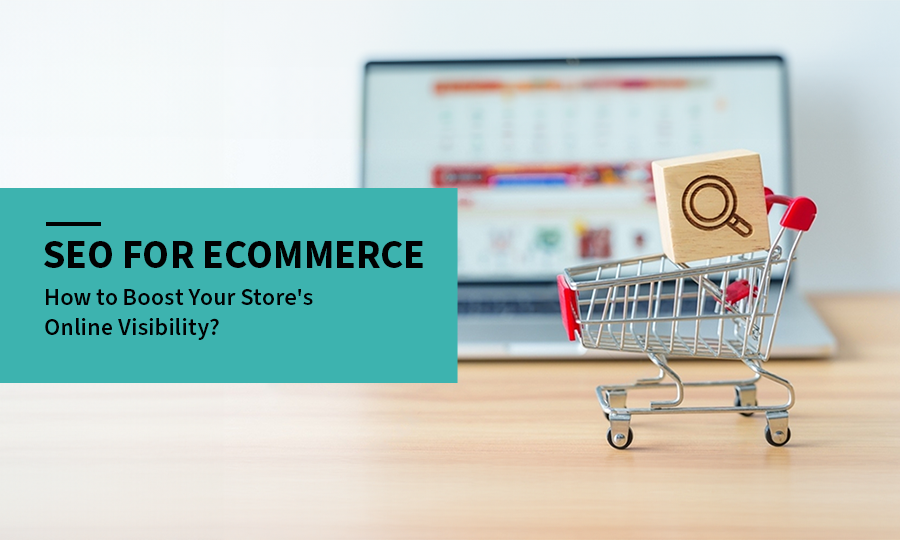In today’s competitive eCommerce world, having a stunning website is just the beginning. To succeed and drive traffic to your online store, you need a solid SEO strategy. Search Engine Optimization (SEO) helps increase your website’s visibility on search engines like Google, making it easier for potential customers to find your products. Here’s a step-by-step guide for eCommerce merchants on how to effectively rank your online store.
1. Start with Keyword Research
The foundation of any successful SEO campaign begins with identifying the right keywords. These are the words and phrases that your potential customers are typing into search engines when looking for products you sell. Understanding search intent will help you target the right keywords.
Steps for Keyword Research:
- Use Keyword Tools: Tools like Google Keyword Planner, SEMrush, and Ahrefs help you find high-volume keywords related to your products.
- Focus on Long-Tail Keywords: Long-tail keywords are specific and less competitive, which can help you target customers who are more likely to purchase.
- Analyze Competitors: Review the keywords your competitors are targeting using tools like SpyFu to uncover potential gaps.
Example:
- General Keyword: “Running shoes”
- Long-Tail Keyword: “Best lightweight running shoes for women”
2. Optimize Product Pages
Each product page on your eCommerce store is a potential landing page for search traffic. Optimizing these pages will make them more discoverable and improve their chances of ranking higher in search results.
Key Optimization Techniques:
- Unique Product Descriptions: Avoid using manufacturer-provided descriptions. Write original content that is detailed, engaging, and answers customers’ questions about the product.
- Title Tags: Include the main keyword in the product title tag. Keep it descriptive and concise (under 60 characters).
- Meta Descriptions: Write compelling meta descriptions that include your target keyword and persuade users to click.
- Image Optimization: Use descriptive alt text for images with relevant keywords and ensure images are compressed for fast loading times.

Example:
For a product like running shoes:
- Title Tag: “Lightweight Running Shoes for Women | Best Comfort & Performance”
- Meta Description: “Shop our lightweight running shoes for women. Featuring superior comfort, style, and performance for every runner. Free shipping on all orders.”
3. Improve Site Structure and Navigation
A clean, intuitive website structure improves user experience (UX) and helps search engines crawl your site efficiently. Well-organized navigation not only makes it easier for visitors to find products but also for search engines to understand your website’s content.
Best Practices:
- Clear Categories: Organize your products into clear categories and subcategories to help both users and search engines.
- URL Structure: Use SEO-friendly URLs, such as “example.com/running-shoes/women” instead of “example.com/product1234”.
- Breadcrumb Navigation: Adding breadcrumbs on product pages allows both users and search engines to understand the page hierarchy.
- Internal Linking: Link related products and blog content to increase time on site and boost rankings.
4. Mobile Optimization
With the increasing number of mobile shoppers, having a mobile-friendly website is essential for SEO. Google also uses mobile-first indexing, which means it predominantly uses the mobile version of your site for ranking.
Tips for Mobile Optimization:
- Responsive Design: Ensure your store is optimized for all devices by using a responsive design that adjusts based on screen size.
- Fast Loading Speed: Mobile users expect fast load times. Compress images, enable caching, and minimize scripts to improve site speed.
- Easy Navigation: Make it easy for mobile users to navigate your store with clear menus and large clickable buttons.
5. Speed Up Your Website
Page load speed is a critical ranking factor for both desktop and mobile sites. If your website is slow, users will bounce, negatively impacting your rankings. Google’s PageSpeed Insights tool can help you test and improve your website’s performance.
Speed Optimization Tips:
- Image Compression: Reduce image file sizes without sacrificing quality using tools like TinyPNG.
- Minimize HTTP Requests: Limit the number of elements (scripts, stylesheets) on each page.
- Use a Content Delivery Network (CDN): CDNs help speed up load times by storing copies of your website on servers around the world.
- Enable Browser Caching: This reduces the load time for return visitors.
6. Create Engaging Content
Content marketing is a powerful SEO strategy. By creating high-quality content, you can drive traffic, establish authority, and improve rankings.
Content Ideas for eCommerce:
- Product Guides: Create comprehensive buying guides for your products to help customers make informed decisions.
- Blog Posts: Start a blog that addresses customer pain points, showcases product features, and answers common questions.
- How-To Videos: Share instructional videos on how to use your products or unboxings.
- Customer Reviews: Encourage customers to leave reviews, as user-generated content can positively impact rankings and conversions.
7. Build Quality Backlinks
Backlinks (links from other websites pointing to your site) are one of the strongest ranking signals for SEO. High-quality backlinks can significantly improve your online store’s credibility and search engine visibility.
Strategies to Build Backlinks:
- Guest Blogging: Write guest posts on authoritative websites in your niche and link back to your product pages.
- Influencer Marketing: Partner with influencers who can promote your products and link to your website.
- Press Releases: Share noteworthy news about your brand or product launches to gain backlinks from media outlets.
- Directory Listings: Get listed on reputable directories related to your niche.
8. Leverage User Experience (UX)
User experience (UX) plays a crucial role in SEO. A site with a good UX will keep customers happy, reduce bounce rates, and improve conversion rates—all factors that indirectly influence SEO.
UX Tips:
- Clear Call-to-Actions: Make it easy for users to take action, such as adding items to their cart or completing a purchase.
- Simple Checkout Process: Reduce friction by offering a smooth and quick checkout experience.
- Trust Signals: Include trust signals such as secure payment options, return policies, and customer reviews.
9. Monitor and Analyze Your SEO Performance
Once you’ve implemented your SEO strategy, it’s essential to track your progress. Tools like Google Analytics, Google Search Console, and Ahrefs can help you monitor traffic, keyword rankings, and other important SEO metrics.
Metrics to Track:
- Organic Traffic: How much traffic is coming from search engines?
- Bounce Rate: Are visitors staying on your site or leaving quickly?
- Conversion Rate: How many visitors are completing purchases?
- Keyword Rankings: Are your targeted keywords ranking higher?
Final Thoughts
SEO is a long-term strategy that requires patience and consistency. By focusing on key areas like keyword research, on-page optimization, site structure, mobile-friendliness, and content creation, eCommerce merchants can build a solid SEO foundation. Remember, the goal is not just to rank higher but to provide an excellent shopping experience that leads to conversions and customer loyalty.
By following these actionable steps, you can significantly improve your online store’s visibility, drive more organic traffic, and boost sales.




